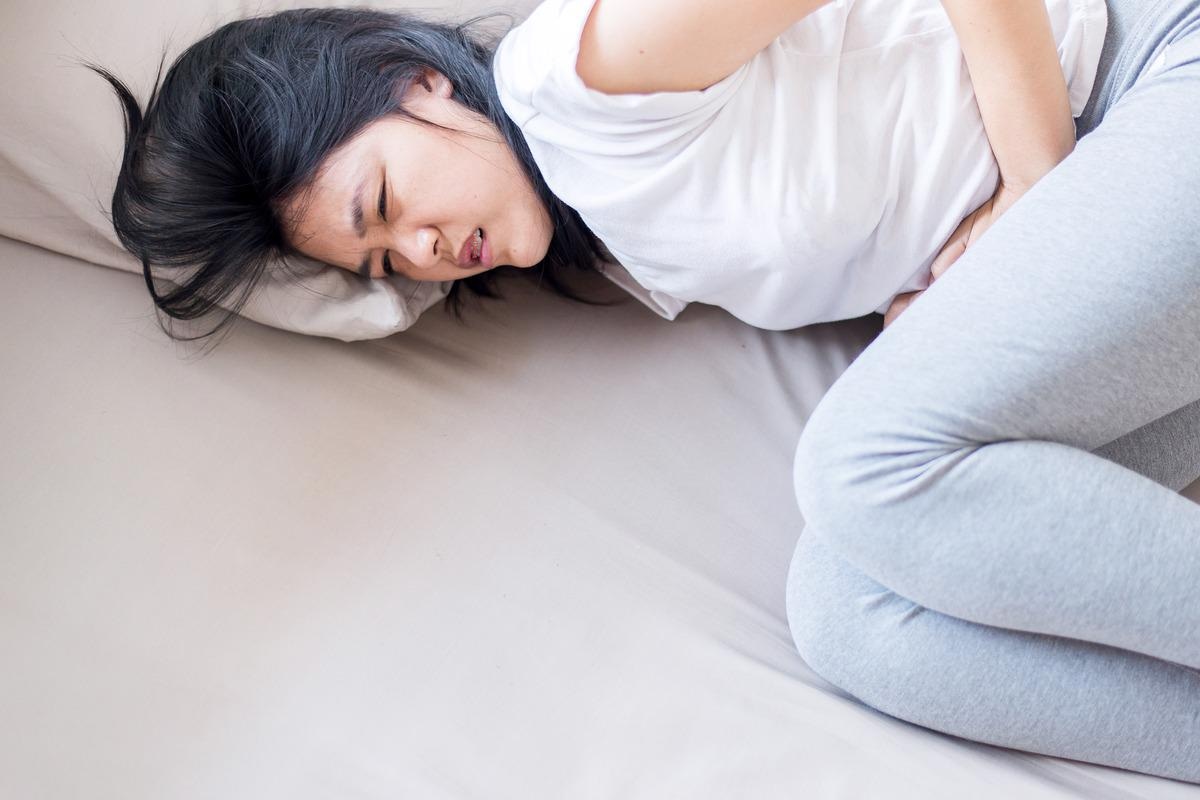Introduction to PMDD
Premenstrual dysphoric disorder (PMDD) sounds like a frightening thing, and it is for millions of women who suffer from this condition. PMDD is similar to premenstrual syndrome (PMS) in that it occurs before the menstrual period and involves both physical complaints and emotional shifts. However, PMDD is more extreme than PMS.

Image Credit: GBALLGIGGSPHOTO/Shutterstock.com
Symptoms of PMDD
Unlike PMS, PMDD causes drastic mood swings, severe depression or irritable mood, or anxiety over the one or two weeks prior to the period, vanishing over the next 2-3 days. Women of reproductive age are prone to this disorder, which may affect up to 5%-10% of them.
Other symptoms include anger, suicidal thoughts, panic attacks, crying, mood swings, and sleep issues. The individual may lose interest in relationships and activities of daily living, feel constantly tired, switch to binge eating or have unaccountable food cravings, have brain fog, or feel as if she has lost control over her body or mind.
Physical features also include breast fulness and cramps, bloating, headaches, breast tenderness, and pains in the muscles or joints. Skin inflammation, itching, acne outbreaks, and exacerbations of other cutaneous conditions, such as herpes simplex or cold sores, may also manifest at this time.
Some women complain of headaches, dizziness, fainting attacks, or acute sensitivity of the limbs. Numbness, tingling, or prickly sensations could also be present. Vascular symptoms include the sudden appearance of bruises after minor trauma and heart palpitations. Respiratory allergies and/or infections are features in some cases.
Some patients also report reduced coordination, impaired libido, hot flashes, and dysmenorrhea. Changes in vision and eye infections are also present in a few cases. Some women experience insomnia, or conversely, need more sleep than usual.
These symptoms reduce the feeling of physical well-being and can interfere with the ability to work interact in social situations or at home.
What Causes PMDD?
Unfortunately, like much of women’s health, the answer to what causes this distressing syndrome is that nobody knows. Commonly attributed to hormonal fluctuations, it may also be due to shifting serotonin levels, which are known to change with the menstrual cycle. Some women respond more sensitively and intensely to such changes.
Women who have a pre-existing tendency to depression or already have a diagnosis of anxiety/depression may be at a higher risk of PMS, especially if they have PMS. In such cases, the underlying psychological distress should be treated, though this does not guarantee that PMDD will not set in.
How is PMDD diagnosed?
With so much confusion as to the cause of this condition, there is no clear-cut diagnostic process. It is important to rule out thyroid over-or under-activity, which can cause similar symptoms to PMDD. Since about 40% of patients with self-reported PDD show the effects of worsening of already-existing mood disorders, all patients should be assessed for this possibility which should be treated as such.
Most doctors rely on the patient’s history of her complaints, a two-cycle menstrual diary that shows the relationship of the complaints to the premenstrual period, and the finding of five or more relevant symptoms, at least being related to the mood, to make this diagnosis.
These symptoms should be consistently absent from day 4-12 of the cycle when hormone levels show the opposite trend to those in the premenstrual period.
Symptoms listed above are considered symptoms that interfere with social or occupational functioning, or indeed, functioning in any situation that is not typically a challenge. Symptoms that are not explained by or are not worsened by other comorbidities are also considered for this diagnosis.
How is PMDD Treated?
In keeping with the vagueness of what is known about PMDD, treatments for this condition cover a wide spectrum. Some rely on antidepressants, though these are now thought to be ineffective.
Many prescribe selective serotonin reuptake inhibitors (SSRIs) to keep serotonin levels high in the brain. Others swear by oral contraceptives to keep female hormone levels low and avoid the fluctuations characteristic of the normal menstrual cycle.
Several supplements such as evening primrose oil, essential free fatty acids, and ginkgo biloba, are widely promoted, often in the name of alternative medicine. It is important to remember that these are not regulated for quality or efficacy and have not been proved to be useful apart from anecdotal evidence. They may be harmful if taken in large doses or interact with other medications.
Breast tenderness, cramps, and pains in the muscles and joints may be relieved by over-the-counter pain-relieving medications such as aspirin and other non-steroidal drugs. Stress-relieving techniques are also in order to accomplish a change of mood.
Lifestyle changes are also recommended, including eating healthy foods in a balanced diet, reducing salt and sugar intake if excessive, and ensuring regular moderate physical activity on most days of the week. Support groups to keep the mood light and find encouragement to move forward could also be very helpful.
PMDD increases over time in some women and may vanish only after menopause, necessitating prolonged treatment.
References
- Premenstrual dysphoric disorder (PMDD) (2018). Retrieved from: https://www.womenshealth.gov/menstrual-cycle/premenstrual-syndrome/premenstrual-dysphoric-disorder-pmdd. Accessed on October 25, 2021.
- Premenstrual Dysphoric Disorder (PMDD) (2021). Retrieved from: https://www.hopkinsmedicine.org/health/conditions-and-diseases/premenstrual-dysphoric-disorder-pmdd. Accessed on October 25, 2021.
- Premenstrual Dysphoric Disorder: Different From PMS? Retrieved from: https://www.mayoclinic.org/diseases-conditions/premenstrual-syndrome/expert-answers/pmdd/faq-20058315.
- Casper, R. F. (2021). Patient Education: Premenstrual Syndrome (PMS) And Premenstrual Dysphoric Disorder (PMDD) (Beyond the Basics). Retrieved from: https://www.uptodate.com/contents/premenstrual-syndrome-pms-and-premenstrual-dysphoric-disorder-pmdd-beyond-the-basics. Accessed on October 25, 2021.
Further Reading
- All Premenstrual Syndrome Content
- Premenstrual Syndrome (PMS) – What is Premenstrual Syndrome?
- Causes of Premenstrual Syndrome (PMS)
- Symptoms of Premenstrual Syndrome (PMS)
- Treatment of Premenstrual Syndrome (PMS)
Last Updated: Feb 7, 2022

Written by
Dr. Liji Thomas
Dr. Liji Thomas is an OB-GYN, who graduated from the Government Medical College, University of Calicut, Kerala, in 2001. Liji practiced as a full-time consultant in obstetrics/gynecology in a private hospital for a few years following her graduation. She has counseled hundreds of patients facing issues from pregnancy-related problems and infertility, and has been in charge of over 2,000 deliveries, striving always to achieve a normal delivery rather than operative.
Source: Read Full Article
